More about: Things to Do in Krakow in 5 Days
Kraków has many artistic and historical charms. It is not for nothing that Krakow is a UNESCO World Heritage City. Seeing them in detail can take time, although it is possible to do it in 5 days. In this article I suggest you plan your visit so that you can enjoy everything it has to offer. And we'll still have plenty of time to explore the surrounding area. Let's get going!
Day 1: Tour Krakow's Old Town
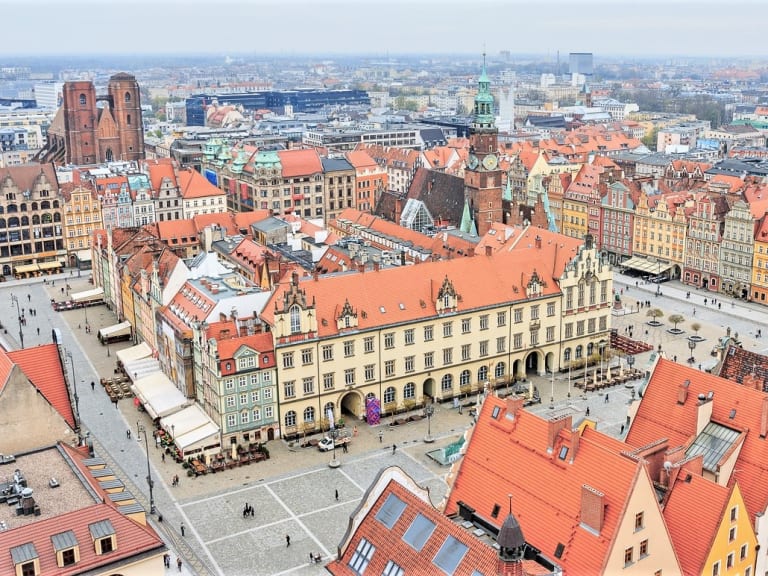
It's best to start with the heart of the city and its most famous sights. Once you've soaked up the atmosphere of the city, you can spend the next few days exploring. Therefore, the first day we will take it easy: we will see the Cloth Market, St. Mary's Basilica, St. Florian's Gate and the Castle. The best way to do this is to book a tour of Krakow's Old Town.
You can also read more in this article on what to see and do in Krakow. And, of course, don't hesitate to book one of the many tours that will take you into Krakow with all the information you need to get the most out of the city.
Visit the Cloth Market
We start at the heart of the Old Town: the Cloth Market, which is also home to St. Mary's Basilica, another of the city's most significant monuments. The Cloth Market was, as its name suggests, the commercial and economic centre of the city for centuries.
Although it already existed in the 13th century, its current appearance is purely Renaissance and from the 16th century.
Step inside the Basilica of Santa María
The Basilica of Santa Maria is a beautiful Gothic temple which, throughout its history, has incorporated elements of other architectural styles. On the outside, it stands out for its almost fortress-like rotundity. But the best part is inside: its decoration and trousseau are simply stunning.
As a curiosity, you will notice that every hour a trumpet sounds from the top of the basilica. According to legend, it was a trumpeter at the top of a tower who warned the city of the approach of the Mongols. The musician, however, did not have much time to play, as an arrow shot by the Asian invaders pierced him. Continue exploring the city's cultural heritage in this article on the best churches in Kraków.
Here's a tip: Poland is a very religious country, especially Kraków as it is the seat of the archbishop. Walking through churches when mass is taking place can attract stares from the locals. This can be uncomfortable if you come from a Western country where these rules are a little more relaxed.
Explore St. Florian's Gate
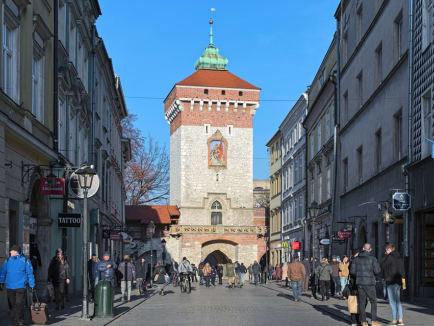
About 10 minutes or so from the Cloth Square is St. Florian's Gate. A chance to see what the walled Kraków of the Middle Ages was like. It is a monument of extraordinary beauty despite its defensive function. If you want to further explore this facet of Krakow's architecture, take a walk around the Barbican and defensive walls as well.
After this walk, which can take up to 3 hours, it's time for a snack. Need some ideas? Here is more information on where to eat in Krakow.
After lunch, visit the Castle
After lunch, let's move on to Krakow's main attraction: its Castle and Cathedral. They are located on Wawel Hill, at the southern end of the walled city and overlooking the Vistula River. It is a place that is a true sancta sanctórum of Polish history.
If you book a guided tour of Wawel Castle you can discover the luxury in which the kings of Poland lived, as well as their tombs in the Cathedral. Here are the must-see sights:
- Sigismund's Chapel (Cathedral).
- The Chapel of Santa Cruz (Cathedral).
- Tombs of the Counts and Kings of Poland (Cathedral).
- State Courtyards (Castle).
- Treasury and Armoury (Castle).
- Statue of John Paul II (exterior).
To see the vast majority of these charms, you will have to go inside the monuments. See this article for more information on how to get to Krakow Castle, opening hours and entrance fees.
Day 2: Immerse yourself in the Jewish Quarter and WWII Krakow
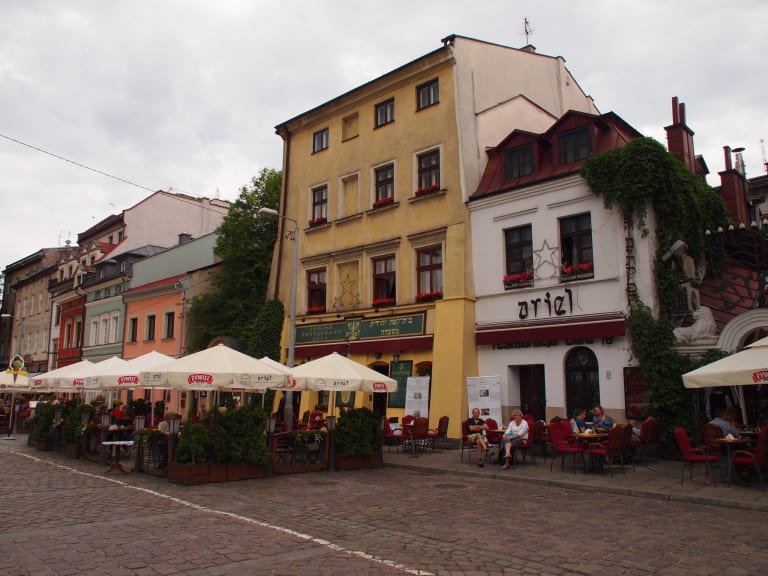
On the second day you can delve into the most historic city, especially the one that has felt the most the wound of the Second World War and the Holocaust, which was ruthless in Poland. There are many things to see in this regard, but I would like to highlight three: the Jewish Quarter, the Krakow Ghetto and the Oskar Schindler Factory. All of these places are in close proximity to each other on the banks of the Vistula River, although the Ghetto and the factory are on the other side of the river.
Explore the Jewish Quarter
Also called Kazimierz, this is where the Jews of Kraków were located from the 16th century onwards. Over time, Kazimierz became one of the largest Jewish quarters in Europe, as witnessed by its high concentration of synagogues. I recommend that you book a guided tour of the Jewish Quarter and then visit one of the synagogues. The most important are the following:
- Old Synagogue.
- Remuh Synagogue.
- Tempel Synagogue.
- Isaac Synagogue.
A good complement to the visit can also be a closer look at the Jewish Museum of Galicia. Its name has nothing to do with the Spanish region, but with the name of an ancient kingdom. Here are some more things to do in Krakow's Jewish Quarter.
Visit the Krakow Ghetto
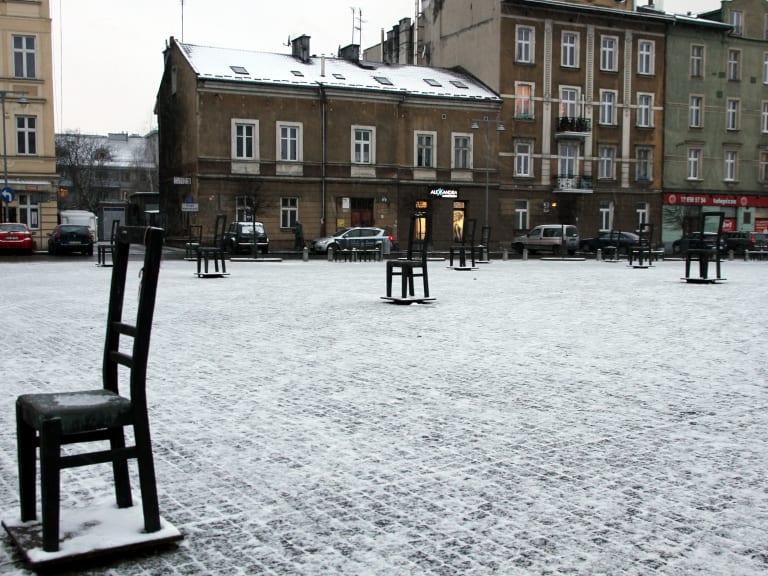
From the Jewish Quarter, just across the bridge, you will find yourself in an area where you can see the Krakow Ghetto. Or rather, what is left of it. These are the remains of the wall that isolated the ghetto, one of the largest during the Nazi occupation along with Warsaw. Here, for example, the famous filmmaker Roman Polanski was born. This is not the only cinematographic landmark you will find in this area.
Visit Oskar Schindler's Factory
Immortalised by Spielberg in Schindler's List, Oskar Schindler's factory was the place where this German businessman took in many Jewish workers in order to save them from deportation.
If you are a lover of cinema, history or both, it is essential that you book a guided tour of Schindler's factory.
Day 3: Take a trip to Auschwitz
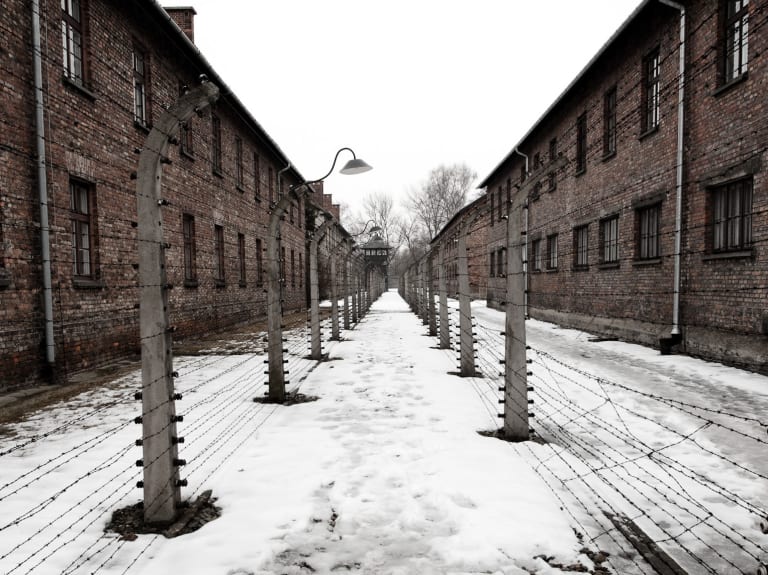
Auschwitz is located on the outskirts of Krakow. It is a place of terrible historical significance because of what happened there, but if you like history, you should definitely book a trip to Auschwitz.
A day trip to Auschwitz is a must for several reasons. Firstly, because it is an extensive visit: there are two camps within the Auschwitz-Birkenau complex; secondly, you will have to take the bus there and back. There are two ways to go:
- On your own: There are several ways to go. Here is more information on how to get to Auschwitz from Krakow.
- With an organised tour: choose the one that best suits you from the different options of excursions to Auschwitz from Krakow.
Visit the first Auschwitz camp
Auschwitz is actually two camps. One, smaller, was a Polish military barracks until the German occupation, and the other, gigantic, is the one you know from photos. The latter is the famous Auschwitz Birkenau, which I will discuss in more detail later. When you arrive at Auschwitz you will first be introduced to this camp. I will tell you what you will see there; although it is a list of horrors, whether you are passionate about history or not, it will give you food for thought:
- The famous "welcome" to the camp forged on the gate: Arbeit macht frei.
- The brick barracks.
- The firing squad wall.
- St. Maximilian Kolbe's cell.
- The only surviving gas chamber.
- The crematoria.
- The piles of belongings (spectacles, shoes...) belonging to the prisoners.
If you book an excursion to Auschwitz, you will also be able to learn more about what happened there through the highly educational exhibitions located inside some of the barracks. Once you have completed your tour, you will board a bus that will take you to the gate of Birkenau in less than 15 minutes.
Get closer to Birkenau
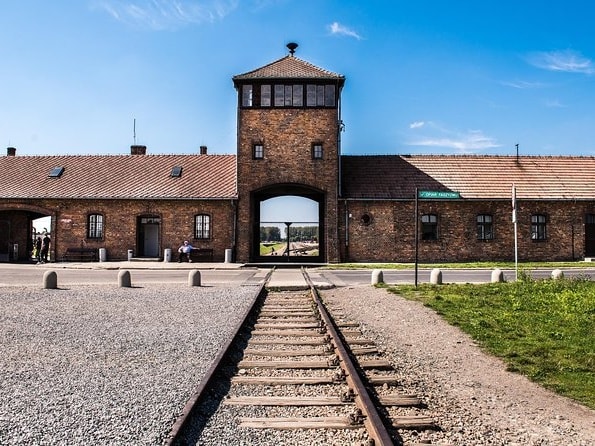
This is the most impressive camp, both for its size and for having been the place where most Jews and political prisoners were murdered of all the Nazi extermination camps. It is an enormous extension of which only the barbed wire fences, large wooden barracks and the entrance to the gas chambers (these chambers, as such, were destroyed by the Nazis during their escape) remain. This is basically what you will be able to do there:
- Walk through the barracks and see how the inmates lived.
- Visit the Holocaust memorial.
- See the entrances to the gas chambers.
At the end of the Auschwitz tour you will be returned to the first camp, from where you can start your return to Krakow.
Consider these tips for visiting Auschwitz
Auschwitz is definitely not for everyone. What you will see if you book a tour to Auschwitz is very strong. In fact, visitors often come away from the place completely despondent, so if you're sensitive, I advise you to think carefully about going. And if you are travelling with children, I also suggest you think about it. Especially since there are so many things to see in Krakow with children.
Another thing to know is that there are strict rules of respect inside. Talking loudly and taking pictures of the mountains of prisoners' belongings is not allowed. Also, with the recent controversy over visitors taking selfies, this issue is under increased scrutiny. If you have nevertheless decided to visit these extermination camps, here is all the information you will need:
- Auschwitz opening hours.
- Ticket prices and guided tours of Auschwitz.
- How to buy tickets to Auschwitz.
- Duration of the visit and tours in Auschwitz.
After such an impressive visit, the best thing to do is to end the day wandering the streets or relaxing in a place to recover. The Vistula River boulevards are a good place to do this.
Day 4: Don't miss Wieliczka Salt Mines
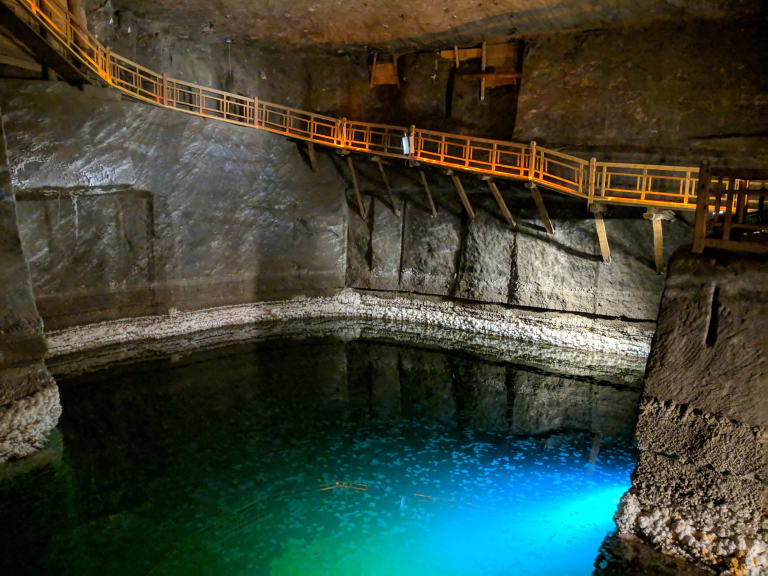
The Wieliczka Salt Mine is one of Poland's UNESCO World Heritage Sites. Not for nothing does it receive 1 million tourists a year. It is well worth a visit because of its proximity (30 minutes by car) to Krakow. For more information on how to get to the Wieliczka Salt Mine from Kraków, click here.
It is a unique site, with salt mines dug at unusual depths of between 60 and 130 metres. It is not only made up of passages but also of sumptuous chapels. Find out more about what to see and do in the Wieliczka Salt Mines here. To whet your appetite, here are some of the most significant sights:
- Copernicus Chamber.
- Chapel of St. Barbara.
- Chapel of St. Kinga.
- Cunegunda's Well.
Please note that if you book a tour to the Wieliczka Salt Mines it will take about 3-4 hours. The good news is that there are places to buy food and drink in the mines themselves, and even restaurants outside. Here are some articles to help you with any practical questions you may have:
- Duration of tours in the Wieliczka Salt Mines.
- How much does it cost to visit the Wieliczka Salt Mines.
- Tips for visiting the Wieliczka Salt Mines.
- How to visit the Wieliczka Salt Mine on your own.
- Opening hours of the Wieliczka Salt Mine.
Day 5: Take a short break
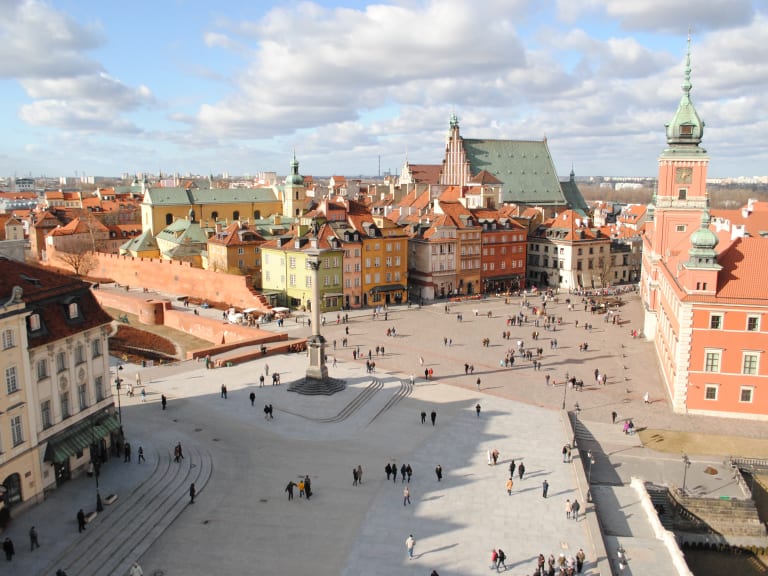
We've already seen the essentials of Kraków and the surrounding area, so how about reserving the last day for a getaway to another charming location? The great thing about Poland is that it's full of beautiful places, so you won't be short of options. Let's take a look at the different cities where you can spend your last day. For more details, check out this article on what to see and do around Krakow.
Take note of the places around Krakow
Of the cities near Kraków, I would highlight some small towns or picturesque and charming villages. Especially prioritising that it doesn't take a long time to get to them. They are the following:
- Tarnów: about 1 hour and 10 minutes by car.
- Lanckorona: about 39 minutes by car.
- Niepolomice: 35 minutes by car.
- Zakopane- about 50 minutes by car.
Enjoy the best views in Zakopane
Booking an excursion to Zakopane is a must if you're spending five days in Kraków. Known as the winter capital of Poland, it has stunning panoramic views. Ideal for those who enjoy nature tourism.
You can also relax in the outdoor thermal pools of this picturesque town in the Podhale region.
Take a cable car ride in Tatra
If you book a Tatra tour, you'll be in for some breathtaking scenery, especially if you take a cable car ride up Gubalowka Hill, from where you can glimpse the Tatra Mountains and see Wielka Krokiew, an impressive ski jumping hill.
Learn more about John Paul II Wadowice
Located in southern Poland, Wadowice is the birthplace of Pope John Paul II. If you book a Wadowice tour, you will see the memorials erected in his memory in John Paul II Square.
You will also visit the Museum of the Family House of John Paul II, which exhibits family memorabilia and objects.
And if you have a sweet tooth you can taste the popular cream cakes called "kremowka".
Explore Poland's religious capital - Czestochowa
Czestochowa is one of the oldest cities and the religious capital of Poland where you can visit the Jasna Góra Monastery where the miraculous icon of the Black Madonna is located.
If you book a tour to Czestochowa, one of the Pauline monks will guide you through this Catholic shrine.
Get the best photo of your trip at Pieskowa Skala Castle
Located in the Ojców National Park, Pieskowa Skala Castle is a royal fortress perched on a limestone cliff.
If you book an excursion to Pieskowa Skala Castle, you will have access to a large art museum that brings together wonderful European must-see works of art. Please note, however, that it is only open between May and October.
Round off your trip with a visit to Warsaw
The capital of the country. A very beautiful city, its historic centre is a UNESCO World Heritage Site. Although, yes, it is almost completely rebuilt since the city was razed to the ground after the Second World War.
The distance is 3 hours and 45 minutes. Not an optimal distance if you plan to return to Krakow. However, I recommend that you consider booking your return flight in Warsaw itself. To make the most of your transfer time, find out details on how to get to Warsaw from Krakow.
Whichever location you choose, I can assure you that it will be an unbeatable highlight of your trip to Krakow.
Get to know Wroclaw
In Polish Wroklaw, in English we know it better by its old, more Germanised name: Wroclaw. It is one of the most important Polish cities (and one of the most beautiful). It has a very Germanic look, which is not surprising given the influence this community exerted historically until the end of World War II.
It is located 3.5 hours from Kraków. This is a less manageable distance, although it might be a great idea to fly back from Krakow, so you can see both cities comfortably! Anyway, here is some practical information on how to get to Wroclaw from Krakow.



